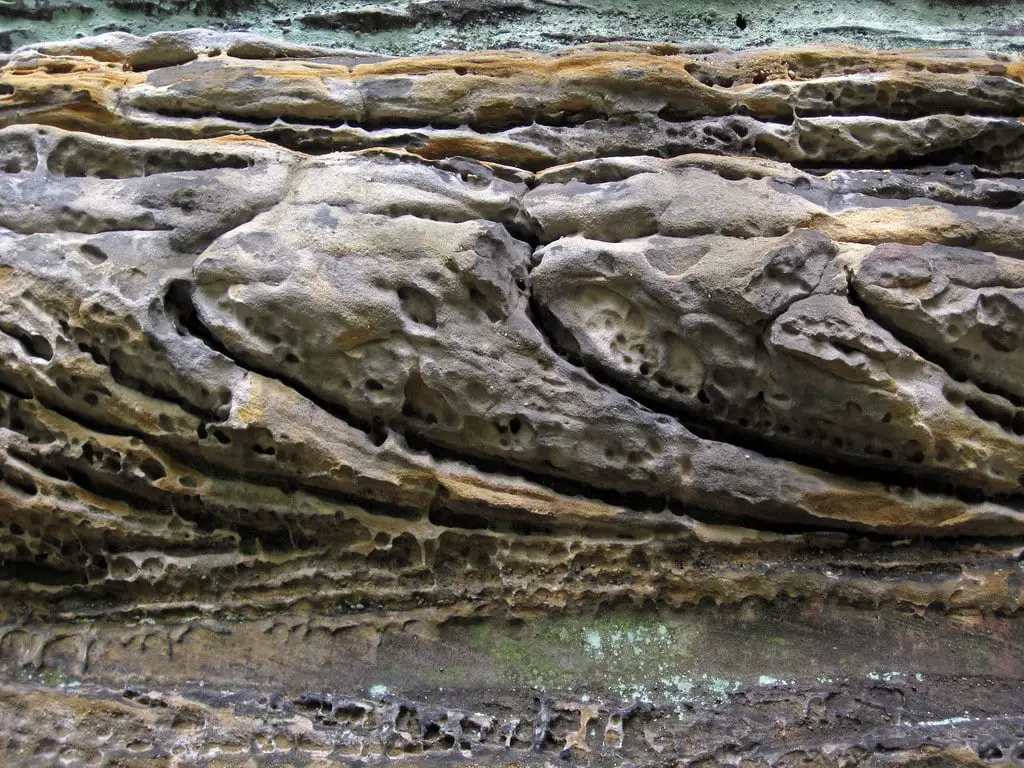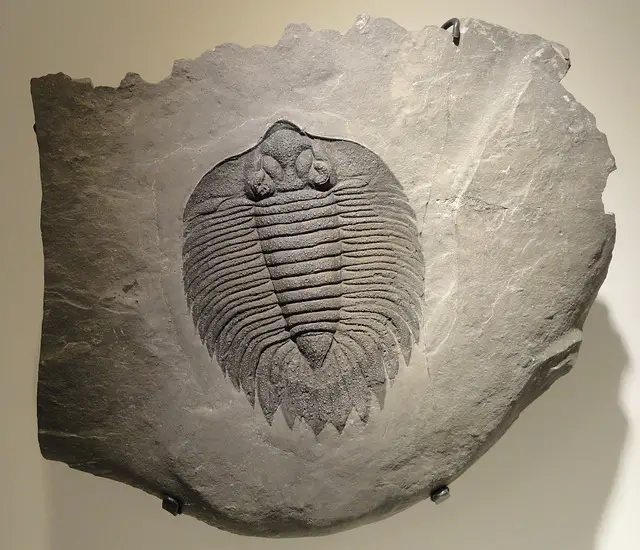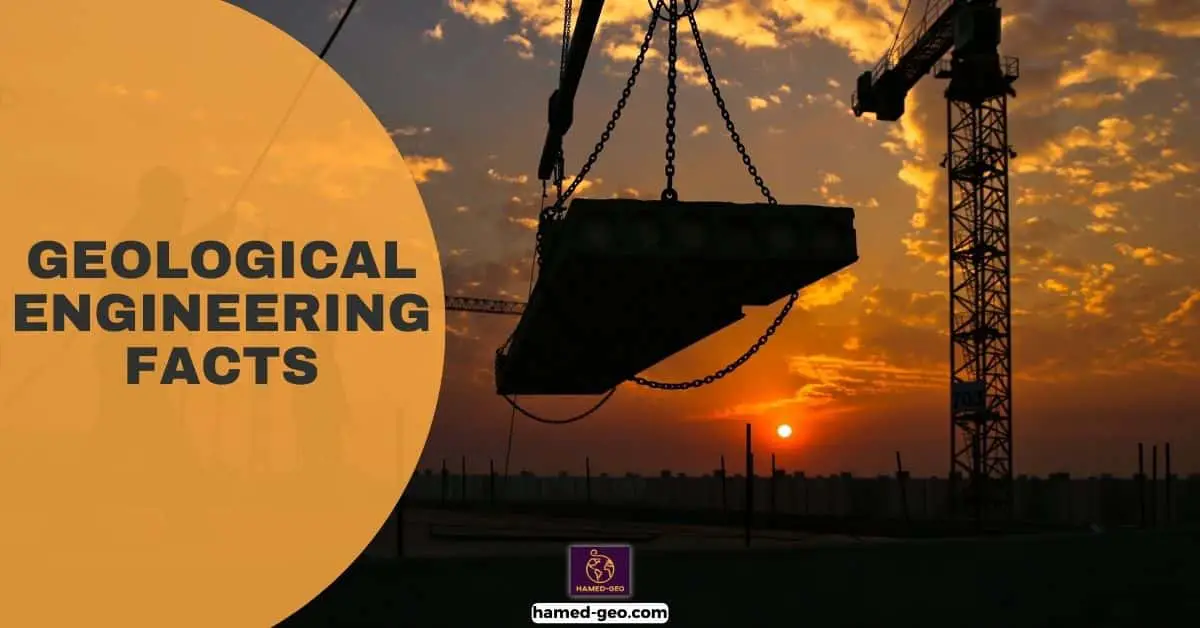What are sedimentary structures?
Sedimentary structures refer to all kinds of features in sediments and sedimentary rocks formed during the deposition process. The sedimentary rocks and sedimentary structures are characterized by bedding which occurs when layers of sediments with different particle sizes are deposited on top of each other. Sedimentary structures are usually seen in outcrops or in large hand specimens rather than through a microscope. These structures are generally an indication of what sedimentary environments look like. Observable patterns usually identify them in the sedimentary beddings or distinct shapes within the sediments (Winsemann J. et al. (2021)). For instance, if the sedimentary rock does not have distinctive features or is not uniform, then there is a good chance that it is a sedimentary structure.
Sedimentary structures are essential since they provide information about the depositional environments such as flow direction, climate, arid or semi-arid, and setting either fluvial, lacustrine, or marine. The structures are also important as they indicate the direction
which was initially up within the rock.
What are the different types of sedimentary structures?
-
Stratification
-
Ripples and Dune Marks
-
Symmetrical Ripple
-
Asymmetrical Ripples
-
Cross Bedding
-
Graded Bedding
-
Mud cracks Raindrop impression
-
Sole Marks
Stratification
Stratification is regarded as the simplest sedimentary structure. It is constants of layers thicker than 1 cm, which is referred to as beds, and the layers thinner than 1 cm are referred to as laminations. Laminations are usually composed of fine-grained silt and clay-sized sediments. The stratification structure can range from a more complex like the wavy pattern seen in the ripple marks to chaotic like patterns in the cross-bedding.
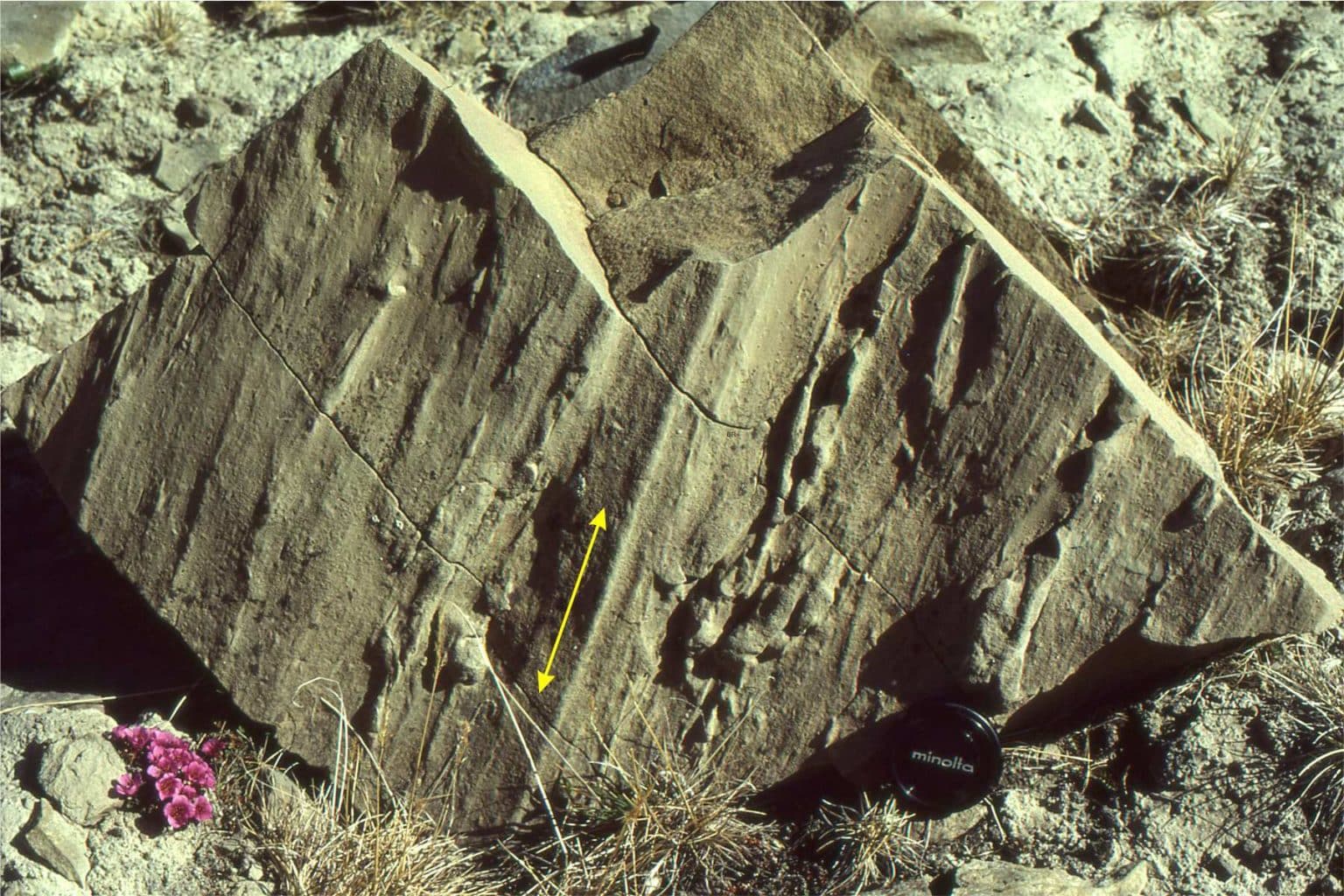
The Dunes and the Ripples Marks
Water and wind movements across sediment mainly cause this type of sedimentary structure. The movement s results in the shaping of the grains into wavy patterns called dunes and ripples. The dunes are thicker than 10 cm, and ripples are usually thinner than 10cm. Ripple marks are generally categorized into Symmetrical ripple marks and asymmetrical ripple marks. Symmetrical ripple marks are formed by water’s back and forth flow over sediments (Bahlburg, H. et al. (2020)). They usually start in shallow marine environments where the back and forth motions of waves and tides shape the sediments at the bottom of the ocean. This ripple type has both sides dipping about the same angle, hence the name symmetrical ripple marks.

On the other hand, asymmetrical ripple marks are formed when water moves in one direction, like in a river. Unlike the symmetrical triple marks, the limbs of this type of sedimentary structure are not equal. One side of these ripples is shallow, while the other is steeper. These ripple marks are essential in telling the direction flow of a river because sediments move up the shallow side of the ripple and get deposited
on the steeper side.
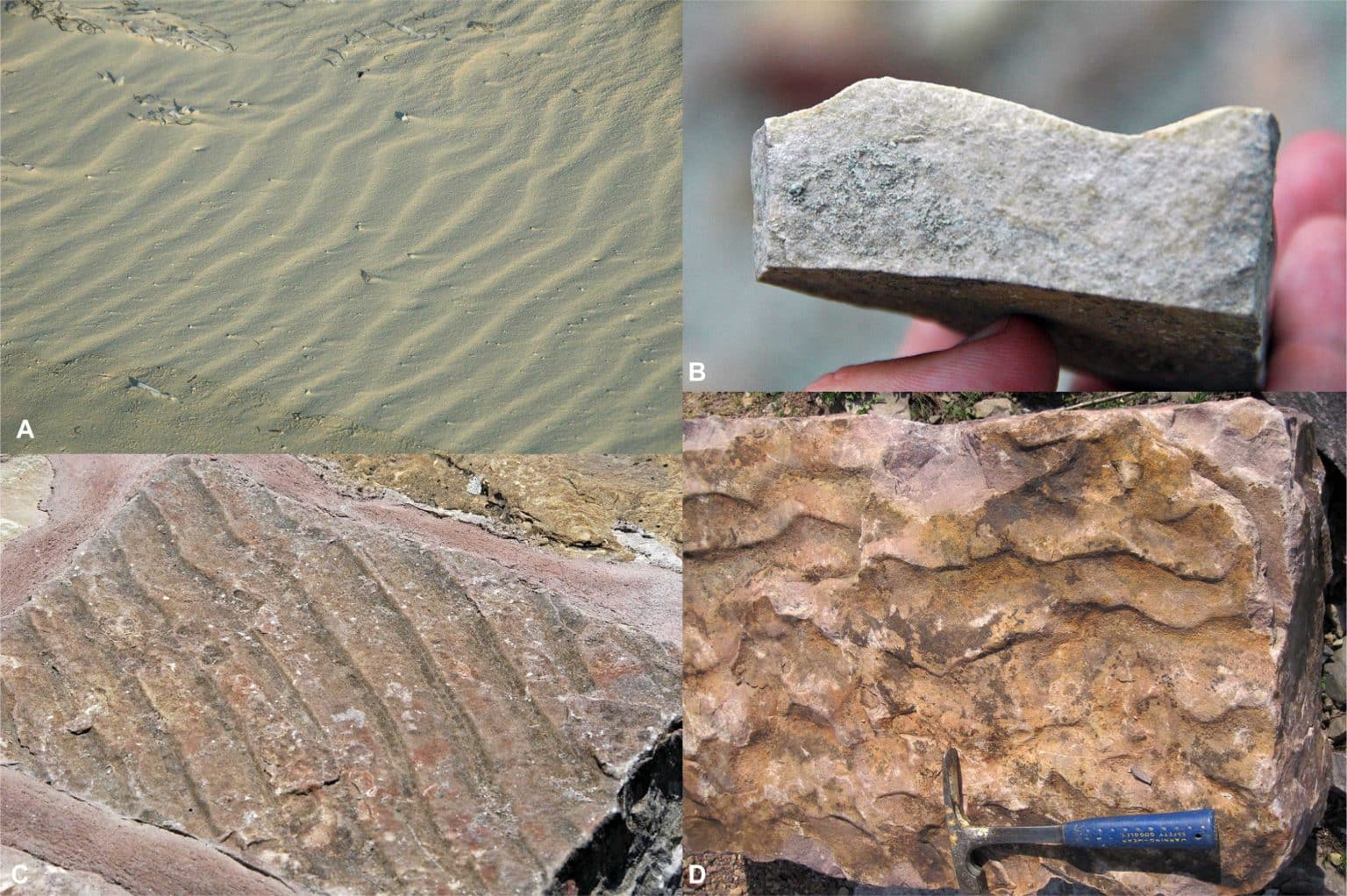
Cross Bedding
The cross-bedding sedimentary structure is formed when dunes and ripples are constantly moving. Dunes and waves pass and deposit their sediments over the other residues (Wach, G. D. et al. (2018)). The sediments from the steep sides are usually deposited in sedimentary rocks such as sandstones. Therefore the deposition of the steep side of several dunes or ripples creates a sedimentary structure referred to as cross-bedding.

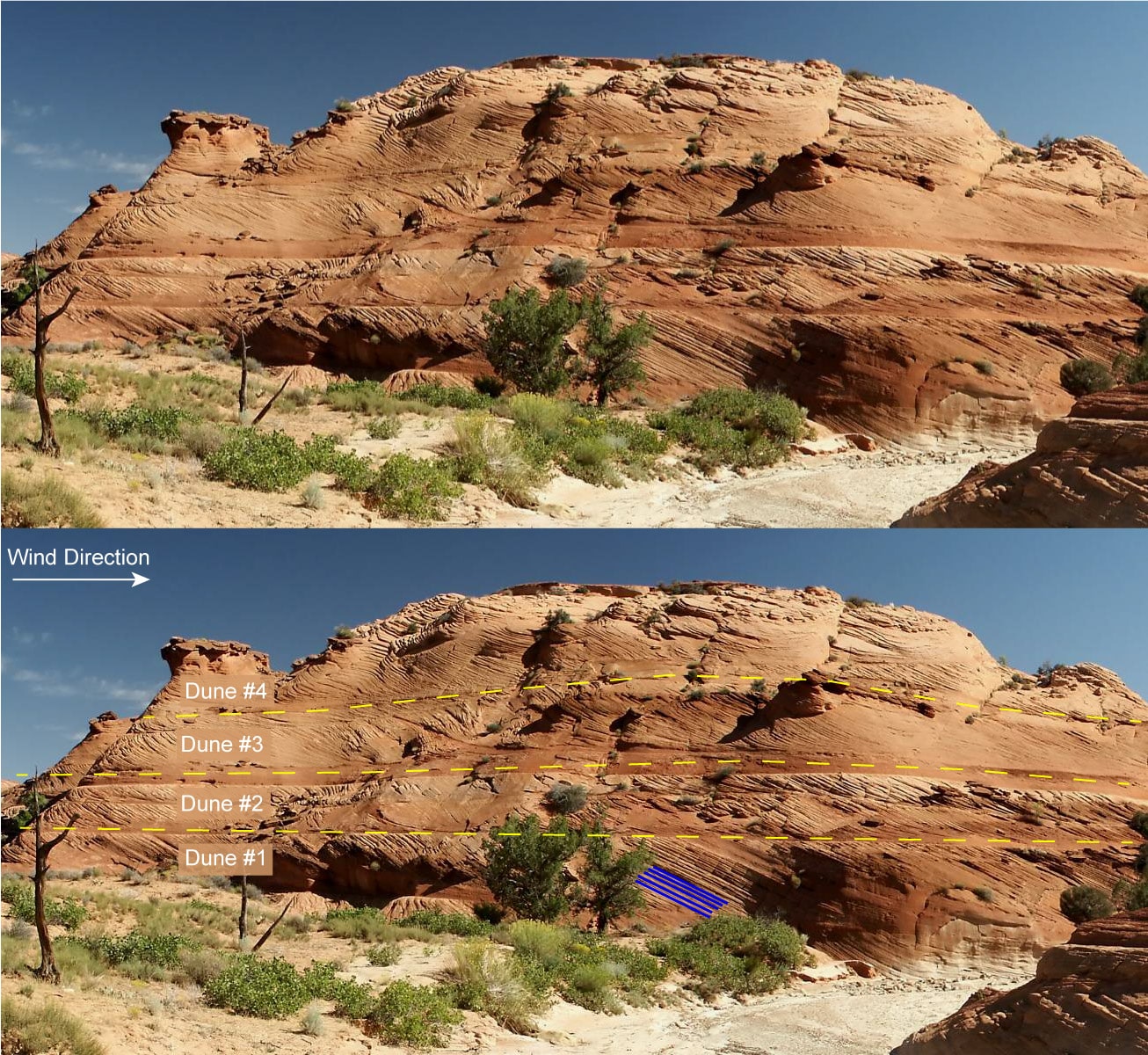
Graded bedding
Graded bedding is one of the most common sedimentary structures where a change in grain size can be observed within a single sedimentary bed. The base of the bed in which the graded bedding occurs is usually made up of coarse particles that progressively get smaller as one moves up the vertical bed. Graded beds arise in environments where transport energy decreases over time, like the changing water velocity in a river (He, B. et al. (2019)). The beds can also be formed during rapid depositional events, most commonly from turbidity currents. Turbidity currents are underwater avalanches of sediment that move downslope, usually starting at the edge of the continental shelf and flowing down the continental slope. The sediment deposited from a turbidity current is called turbidity, which often has graded bedding with the coarsest particles at the bottom of the bed and the smallest at the top.
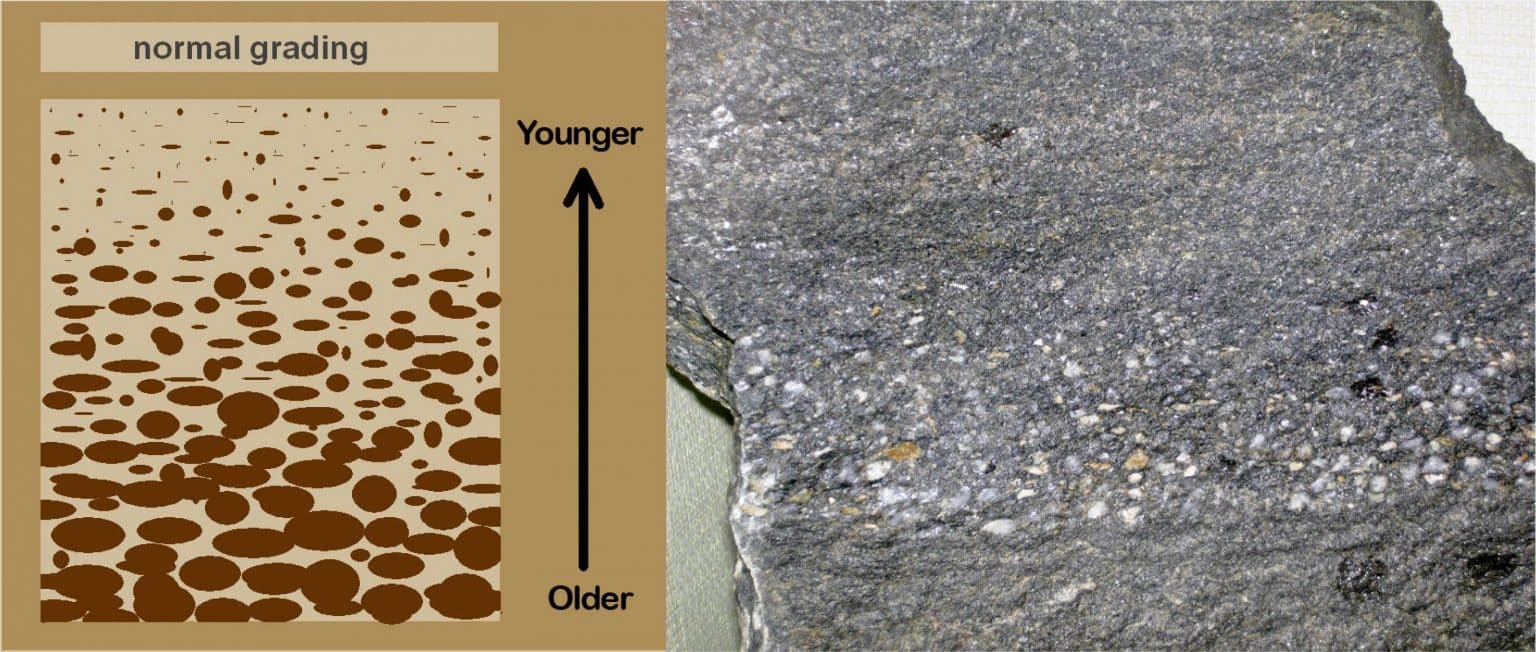
Mud cracks
Mud cracks form when wet sediments, primarily rich in clay, dry out. When the clay mineral gets damp, shrinks, and dries out, they expand. As the deposits shrink, cracks can develop, forming polygons on the earth’s surface. Mud cracks are usually wider at the top of the crack and get progressively smaller towards the bottom of the crack. Mud cracks are, therefore, a good indicator of the presence of cracks due to their patterns.

Raindrops impressions
Raindrops impressions are small and concave imprints made by rain when it falls on the sediments. The small crates or the impressions are made from the force of raindrops falling onto the deposits, making this structure a good indicator. The raindrop impressions are usually found in fine-grained rocks like siltstones and shale but not in coarser-grained sandstones (Ma, Y. et al. (2018)). The impressions likely represent the end of a rainstorm as rain is letting up because any previously formed impressions would be destroyed by subsequent rainfall. That’s why most raindrop impressions are scattered rather than all over the surface. Then the impressions need to be filled in with sediment before the next rainstorm to be preserved.

Sole Marks
Sole marks are sedimentary structures that appear as impressions or grooves in sediments, including flute casts, tool marks, groove casts, and load casts. Usually, the cast of the marking or the raised bump is preserved at the bottom of the sedimentary bed hence the name “sole” mark, and on the mold side, the impression is filled with sediments (Bahlburg, H. et al. (2020)). Flute casts are specifically important structures created by turbidity currents. The movement of these sediment avalanches underwater can scour the ocean floor, creating an elongated impression. Flute casts are usually closely spaced and can be stacked on top of one another. They can tell you which way is up, but they can also tell you how the current is flowing—the tapered end of the flute cast points in the direction of flow. On the other hand, Groove casts are raised parcel ridges often spaced closely and occur in sets of 2 and 3 but do not appear on top of one another like flute casts.

Reference
Lang, J., Le Heron, D. P., Van den Berg, J. H., & Winsemann, J. (2021). Bedforms and sedimentary structures related to supercritical flows in glacigenic settings. Sedimentology, 68(4), 1539-1579.
Spiske, M., Tang, H., & Bahlburg, H. (2020). Post-depositional alteration of onshore tsunami deposits–Implications for the reconstruction of past events. Earth-Science Reviews, 202, 103068.
Yue, L., Liu, Z., & Ma, Y. (2018). Sedimentary environment and depositional evolution of the Mesoproterozoic Bingmagou Formation on the southern margin of the North China Craton. Scientific Reports, 8(1), 1-12.
Bradley, G. M., Redfern, J., Hodgetts, D., George, A. D., & Wach, G. D. (2018). The applicability of modern tidal analogues to pre‐vegetation paralic depositional models. Sedimentology, 65(6), 2171-2201.
Liu, B., Wang, H., Fu, X., Bai, Y., Bai, L., Jia, M., & He, B. (2019). Lithofacies and depositional setting of a highly prospective lacustrine shale oil succession from the Upper Cretaceous Qingshankou Formation in the Gulong sag, northern Songliao Basin, northeast China. Aapg Bulletin, 103(2), 405-432.
Hegde, V. S., Havannavar, G., Hanamgond, P., Shalini, G., Pratihari, A. R., & Hulaji, S. (2021). Facies and Sedimentary Structures of the Kerur Formation, Badami Group, South India: Implications for Depositional environment.
